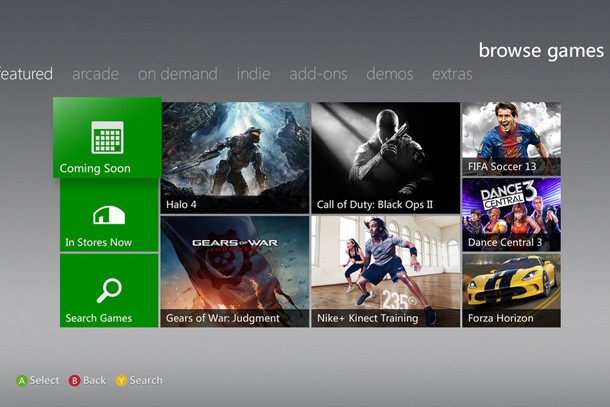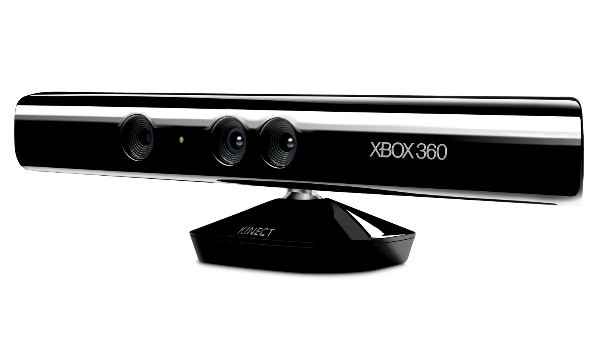Please support Game Informer. Print magazine subscriptions are less than $2 per issue
Microsoft's Hits and Misses With The Xbox 360 Hardware

With Microsoft revealing its next system on Tuesday, the time is ripe to explore what Microsoft did right with the Xbox 360 and where it could have improved. Whether or not the new console carries on the legacies of its predecessor, it's fun to reminisce about these hits and misses as Microsoft prepares to pass on the torch.
Hits

Controller
Microsoft impressed many with its 360 controller; the trigger buttons were ideal for first-person shooters. The controller was not only much more comfortable than the original Xbox's S, it also sported superior button placement. Unfortunately, the d-pad was its weak point, but fixes are available, and Microsoft even released a 2010 silver controller with a twist-up d-pad to help the issue. While the issue was never completely dissipated, at least attempts were made to fix the shortcoming.
Xbox Live
Gamers have always been skeptical about paying for an online service, but once they experienced Xbox Live's superior quality, it convinced many it was worth it; currently, it has over 46 million subscribers. Connecting to matches is quick, drop rates are low, and chatting with friends is smooth for the most part. It could be said that the service brought gamers together in a new way with its accessible features. Microsoft figured out the recipe to creating a solid online community well before Sony by including a headset with consoles, encouraging communication.
Accessing Genre Weaknesses
When Microsoft released the first Xbox, it became a destination for first-person shooters, especially with its Halo franchise riding strong. But Sony remained on top with a stronger variety in its library. For the Xbox 360's beginnings, Microsoft targeted the RPG genre, something Sony's PlayStation 2 catered to more, especially in regards to JRPGs. Microsoft secured games like Blue Dragon, Lost Odyssey, Tales of Vesperia, and Eternal Sonata. Microsoft even shocked people by getting blockbuster Final Fantasy XIII, a series previously exclusive to Sony. While it didn't by any means win the RPG war, it still measured up, and Microsoft's library is much more diverse than it was in the previous generation.
The Multimedia Marketplace
You could say an app exists for almost everything on the Xbox 360; tailoring your console to your interests is easy. In 2008, Microsoft brought in Netflix fans with a year exclusivity deal and then continued to grow from there with Hulu, HBO Go, and a wealth of other apps. It made the 360 more than just a gaming device, but also an entertainment hub, where with a touch of a button people could access tons of TV, movies, and music.

Achievements
Let's face it; we all love that little blip sound as we gaze at,"Achivement Unlocked." Having a gamerscore to show off the fruits of our labor not only gave bragging rights, but also provided new reasons to experience games. Whether it was collecting hidden items or winning battles without taking damage, we worked to obtain that perfect 1,000 gamerscore. While developers struggled initially at what to give achievements for, as time went on, they got smart and made gamers do more creative tasks all for the thrill of watching their gamerscore grow.
Non-Intrusive Updates
Updating a system can be a pain, locking the player out for some time. But Microsoft made these updates go much faster, smoother, and less frequent than Sony ever did with the PlayStation 3. Not having to dread an update is a godsend to gamers; after all, who wants to wait any longer than they to to dive into the next big release?

Adapting Its UI
Resisting change can be a company's biggest downfall, but Microsoft wasn't afraid to update its interface to fit with the times. Keeping navigation and its app-friendly structure in mind, the 360 has seen a number of dashboard redesigns, and each time, it attempts to keep its growing sections, such as movies, music, sports, and downloadable games, easily accessible. Its biggest achievement? Not bombarding the player with too much when loading up the console.
Up next: See where Microsoft missed the mark...
Misses

Hardware Stability - Red Ring of Death
Chances are, if you owned an Xbox 360, you've experienced at least one red ring of death. If you haven't, you're very lucky, as some people had this happen multiple times, especially with earlier models. The thought of purchasing a system that might potentially break down is a turn-off, and left consumers questioning if they should support an unstable product. Thankfully, Microsoft took accountability for this and offered repairs, but it took a long time to get your console back, frustrating gamers. At least once the 2010 Slim models – which have the lowest failure rate – rolled around, Microsoft found a better design and circuit board to avoid the problem. Still, the fact that this was so prevalent in the beginning of Microsoft's run was disappointing.
Multi-Disc Games
Having to change discs in the middle of a game is frustrating. Microsoft went with DVD instead of Blu-ray for the Xbox 360, and it haunted them. Only so much content can be fit on a single-layer 4.7GB DVD.
Losing Out On Blu-ray
Microsoft hedged its bets on an HD DVD player for the 360. It was the wrong choice. Blu-rays took off and 360 users had to settle for either buying their own Blu-Ray player or a PS3 to experience the superior picture.

Kinect Not Capturing The Hardcore
While Kinect might have been financially successful for Microsoft, it never captured the imagination of the majority of 360 owners. Back in February, Microsoft reported selling 76 million units to date, but only 24 million have jumped on the Kinect train. Microsoft tried hard to campaign it as an asset with its "Better with Kinect" campaign, but many gamers found the Kinect offerings not really all that necessary. Outside of a few decent games, the Kinect didn't wow, so we're hoping if Microsoft focuses more on it with its new console, it strives for better integration. Also, not every household could use the Kinect due to the space and lighting required to run it. Instead of alienating a portion of its audience, Microsoft needs to get everyone on board next time around.
Indie Marketplace
At first, Microsoft was the place to go for indie developers and we saw many titles like Zeboyd Games' Breath of Death VII and Cthulhu Saves The World. Unfortunately, the Indie Marketplace turned out to be a mess to navigate and turned more users off than it pulled in. This was a shame, because Microsoft made indie developers go through hoops just to submit their titles for consideration and made it expensive and hard to update their games. A varying quality also made it hard to decide what was worthwhile the majority of the time. We're hoping Microsoft learns from this and supports indie developers with a better interface and display of their titles.
Ad-Riddled Dashboards
The amount of advertisements that bombard us when we load up our 360s is overwhelming. The biggest insult is that users already pay for Xbox Live, but still they're exposed to distracting advertisements. Keep your fingers crossed that Microsoft pulls back on the adverts and realizes that they alienate more than they're worth.
![]()
Avatars
One of the first things Microsoft requires when you set up an Xbox is creating your own avatar. But besides showing up on friends list and decking them out in cool threads, avatars don't have much value. Instead, they became a cash grab for Microsoft than anything beneficial to the player. Indie and Kinect games used the avatars and Microsoft was onto something with using them in 1 vs 100, though that didn't last. Microsoft could capitalize more on avatars in its upcoming console and social games might be the way to go.
Can't get enough of looking back at Microsoft? Check out our hits and misses of its launch lineups.










